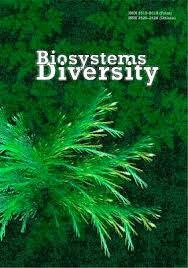Contamination of animal-keeping premises with eggs of parasitic worms
Contamination of animal-keeping premises with eggs of parasitic worms
Author(s): A. P. Paliy, N. V. Sumakova, A. M. Mashkey, R.V. Petrov, K.V. IshchenkoSubject(s): Agriculture, Evaluation research, Human Ecology, Environmental interactions
Published by: Дніпропетровський національний університет імені Олеся Гончара
Keywords: pig-breeder; shepherd; cow; cynological center; exogenous stages of development of helminthes;
Summary/Abstract: Today, one of the important problems in the cultivation and maintenance of agricultural and domestic animals, both in industrial and private farms, is the spread of ecto- and endoparasites, which cause a significant decline in animal productivity, endanger their health and cause economic losses. The study of the level of distribution and conducting of diagnostic studies on parasitoses of animals in farms with different production orientation is an important and integral part of the overall complex of preventive and health-improving measures. The research was carried out during 2007–2017 in livestock enterprises of Kharkiv Oblast. As a part of the research work, 540 samples were collected from livestock farms, of which 180 were from the premises for keeping pigs, 100 from premises for keeping sheep, 120 from premises for keeping cattle, 80 from premises for dogs and 60 – from the surrounding territories of the livestock enterprises. We found that the objects of livestock rearing (pig complex, sheep farm, dairy farm, cynological center) in Kharkiv Oblast have a significant level of sanitary contamination with exogenous forms of helminths (21.7–45.6%) and the soil of the territories (20.0–36.6%). From samples taken from premises for pigs, eggs of four morphotypes were isolated (Ascaris suum – 5.3%, Trichuris suis – 14.6%, Oesophagostomum dentatum – 60.6%, Strongyloides ransomi – 19.4%), from premises for sheep – three morphotypes (Dicrocoelium lanceatum – 3.8%, Trichuris ovis – 29.3%, Strongylata spp. – 46.9%), from premises for cows – three morphotypes (Neoascaris vitulorum – 2.7%, Trichuris skrjabini – 12.9%, Strongylata spp. – 34.5%), premises for dogs – four morphotypes (Toxocara canis – 6.1%, Toxascaris leonina – 5.4%, Trichuris vulpis – 20.6%, Ancylostoma caninum – 17.5%).
Journal: Biosystems Diversity
- Issue Year: 26/2018
- Issue No: 4
- Page Range: 327-333
- Page Count: 7
- Language: English

